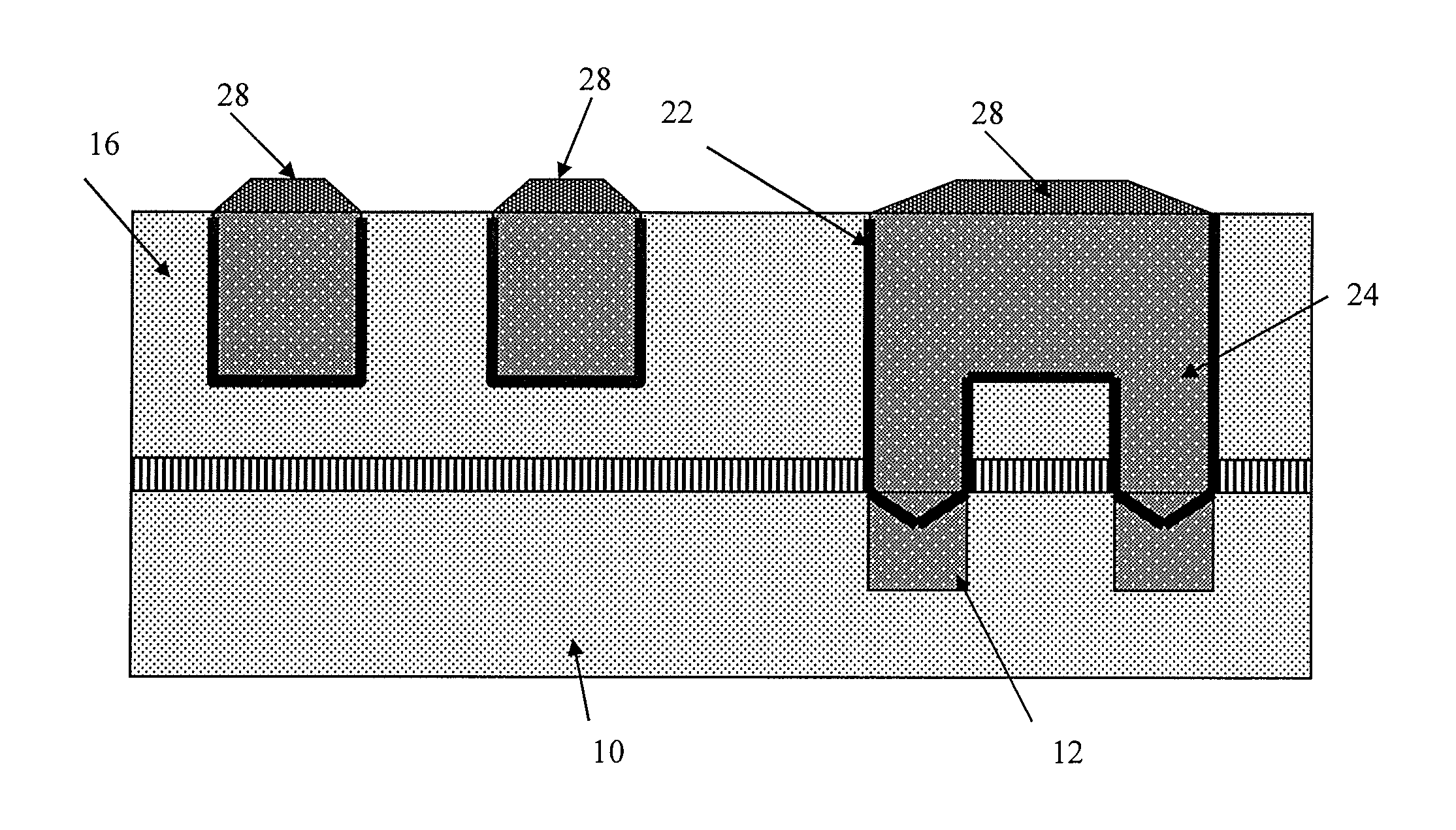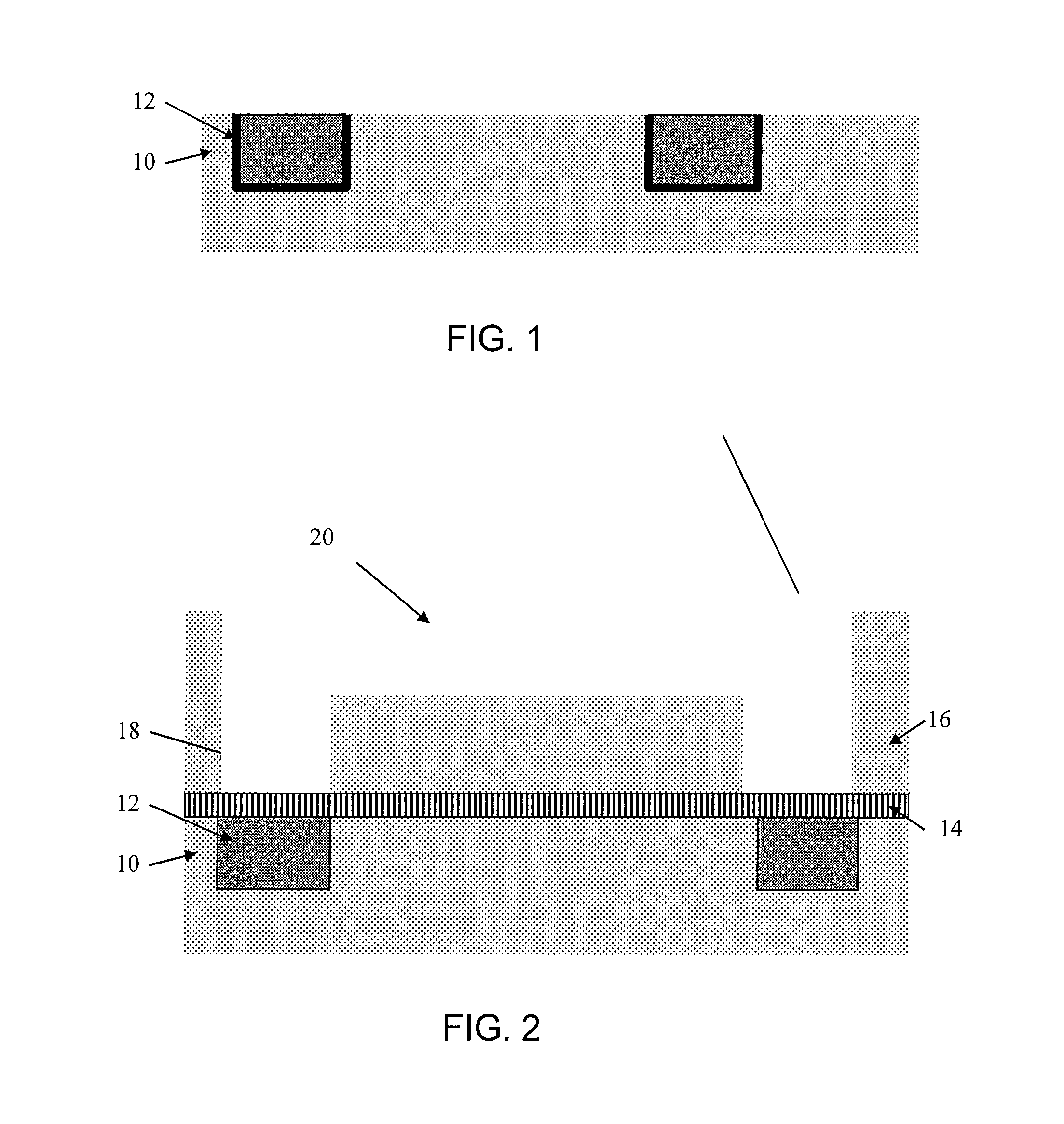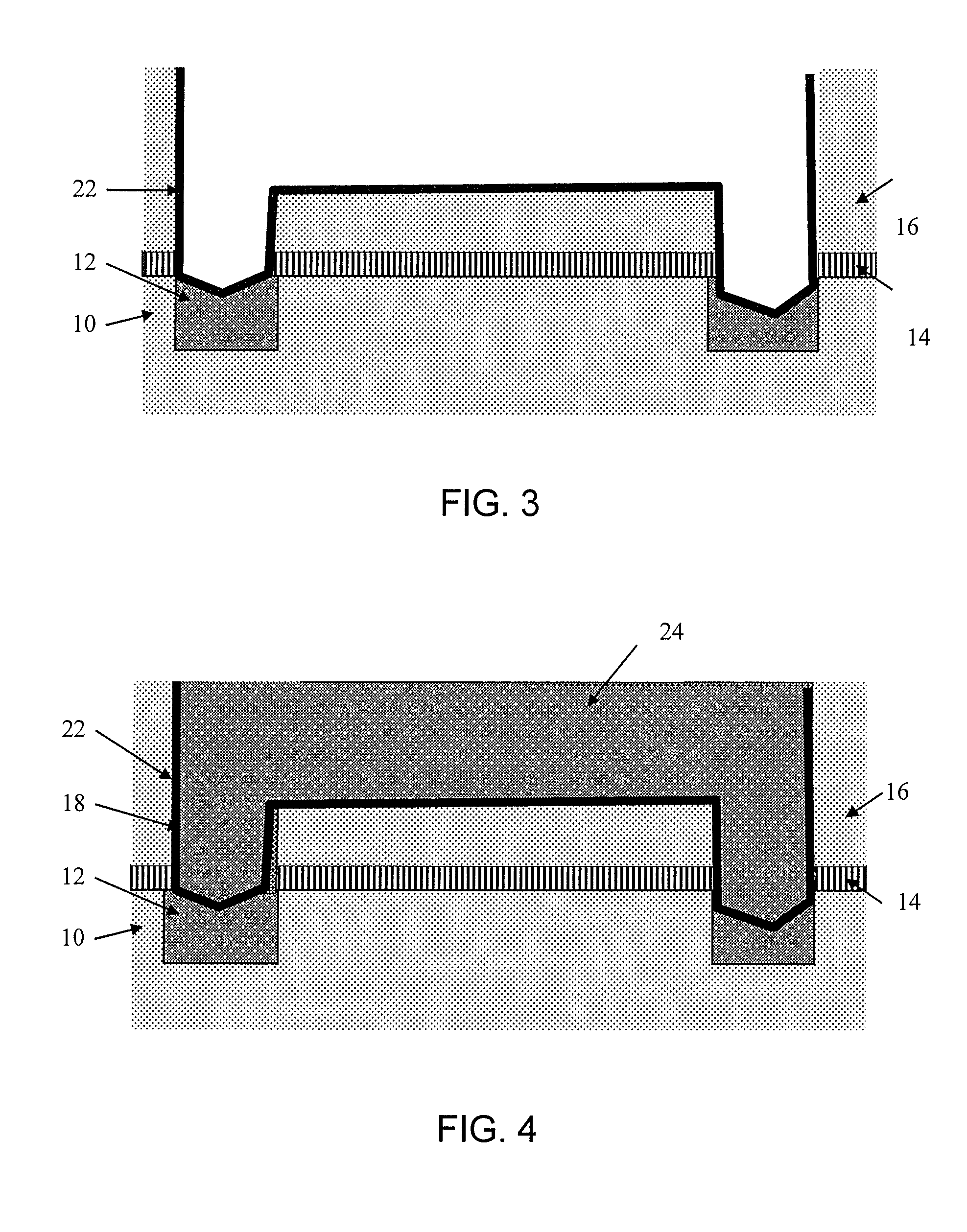Interconnect structure and method of making same
a technology of interconnects and structures, applied in the direction of semiconductor devices, semiconductor/solid-state device details, electrical apparatus, etc., can solve the problems of circuit malfunction, loss of one or more connections, and reducing the reliability of integrated circuits
- Summary
- Abstract
- Description
- Claims
- Application Information
AI Technical Summary
Benefits of technology
Problems solved by technology
Method used
Image
Examples
Embodiment Construction
[0023]The present invention relates generally to an interconnect structure and method of fabricating the same and, more particularly, to a defect free capped interconnect structure and method of fabricating the same. By implementing the fabrication processes and structure in accordance with the invention, the copper interconnect is more reliable than conventional structures and hence is not prone to failure due to shorting, e.g., shorting between copper wires as a result of nucleation.
[0024]For example, advantageously, by implementing the fabrication processes and structure in accordance with the invention, the surface of the interlevel dielectric is free of capping material such as, for example, CoWP or CoWB. That is, by implementing the fabrication processes of the invention, the resultant structure is free of unwanted deposition and / or rogue nucleation of the CoWP (or other capping material) on the surface of the interlevel dielectric. This, in turn, results in low leakage and in...
PUM
| Property | Measurement | Unit |
|---|---|---|
| thickness | aaaaa | aaaaa |
| temperatures | aaaaa | aaaaa |
| conductive | aaaaa | aaaaa |
Abstract
Description
Claims
Application Information
 Login to View More
Login to View More - R&D
- Intellectual Property
- Life Sciences
- Materials
- Tech Scout
- Unparalleled Data Quality
- Higher Quality Content
- 60% Fewer Hallucinations
Browse by: Latest US Patents, China's latest patents, Technical Efficacy Thesaurus, Application Domain, Technology Topic, Popular Technical Reports.
© 2025 PatSnap. All rights reserved.Legal|Privacy policy|Modern Slavery Act Transparency Statement|Sitemap|About US| Contact US: help@patsnap.com



